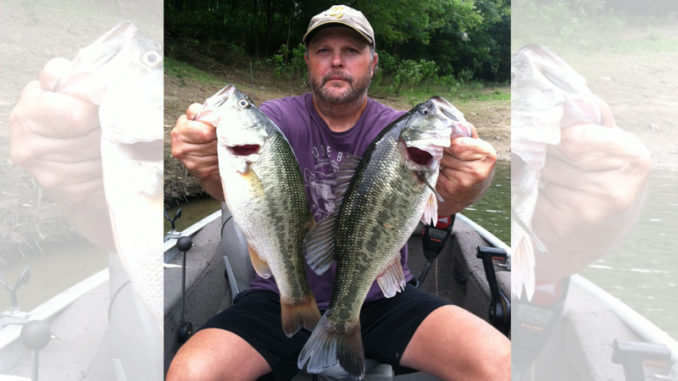
Guide says summer Santee River bass-fishing action is outstanding
As bass fishing gets tough on big lakes, some anglers find outstanding action on smaller waters such as the Santee River. Guide Joe Dennis catches bass by the scores in the river and said the summer action can be nothing short of spectacular.
“On a typical morning, you can catch and release up to 60 or more largemouth bass when everything falls into place,” Dennis said. “We’re often off the water by late morning because my clients are arm-weary and it’s getting hot. We have had some mornings where we caught triple-digit numbers of bass.”
Dennis (843-245-3762) of Father and Son Outdoors said a lot of the fish are in the 2-pound class or smaller, but they provide almost non-stop action.
“But there’s plenty of fish in the 3- to 5-pound class, and these larger fish certainly keep anglers from getting complacent. And you’ll occasionally catch some really big fish in the 7-pound class or larger,” he said. “Fast action and hefty bass make a great summertime combination.”
Dennis said he gets on the river early, just at first light, to take advantage of some sensational topwater schooling action.
Cast where the bass are boiling the water
“Every morning right at first light for about an hour, the fish will be topwater schooling all over the river,” he said. “Not just around shoreline cover but often in the middle, busting forage behind you. If you can quickly get a lure on top of where the fish boils the surface, odds for a hookup are great.
“The best lures for me have been Tiny Torpedos and Flukes, and the best color for the Flukes is usually white. Best colors for the Torpedos vary from black with white stripes, to frog or shad and chartreuse patterns. I think the most important factor is to get the lure on top of the feeding bass quickly and trigger a bite.”
Dennis said that when the topwater action slows, the bite does not. He just switches gears and starts working a Texas-rigged plastic worm near the bottom and around cover.
“The worm can be cast in and around the logs, stumps and blowdowns on the river or really any type object that gives a bass a good ambush point,” he said. “I also have a lot of success casting to the middle part of the river in deeper holes, where bass congregate as the sun gets high.”
Dennis said lighter line gets more bites. He likes 8-pound line with an 1/8-ounce slip sinker. His favorite color patterns for worms are junebug and pumpkinseed.
“You’ll get bites on heavier line for sure. But the light line and weight does make a difference in bites,” he said. “Depending on where you’re fishing, it’s good to have a second rod rigged with slightly heavier line if you working heavy cover in case you hook a really big bass.”
Click here to read about catching bream in the Santee River.


